Wednesday, July 6th
4pm
The mist is down when I arrive in Kilkee; a seaside town that has been continually visited for almost 200 years. The sun that is shining with intensity right then in most other parts of Ireland, is hiding in the clouds here. It’s both warm and grey. The sky is grey; the ocean is grey. It will remain like that for the duration of my time in Kilkee.
I’m staying at the Bay View Hotel, where my room has a window with a side view over the grey ocean. There are five hotels in the town, but the three smaller ones are currently housing some 100 Ukrainian refugees, so only the Bay View and the Stella Maris are open to tourists.
John Hickie is the fourth generation of his family to run the Bay View. He’s been working there since the age of 17, and is now 38. “Originally it was a small B&B with six to eight bedrooms, and a bar,” he says. For some 30 years, it was run as a year-round seaside boarding house by his mother, where guests ate all their meals on site.
Who were the guests? Mostly from Limerick; a tradition which continues to this day. For some reason neither of us can explain (and not because of proximity) Limerick people have favoured Kilkee, and Ennis people Lahinch. Other guests are Swiss, German and some Dubliners. Kilkee does not have any large hotels, so it has never been on the coach tour overnight itinerary. Business is good. From now until the end of August, the hotel is at 95 per cent occupancy.
RM Block
Over time, the Bay View expanded, and now has 18 pleasant, characterful rooms. The hotel employs 41 staff: “We’re not far off the biggest employer in the town.” Among that number are six from Ukraine, five from Poland, two from Spain, and one each from Slovakia and Canada.
Thursday, July 7th
9.15am
I’m in Myles Creek, a complex including bar, restaurant, guest house, off-licence and nightclub. Ger Haugh, the owner, is signing an invoice for the week’s provisions. When he sits down to talk to me, he remarks grimly that the cost for this week’s fruit and vegetables is three times what he usually pays.
Haugh is a long-standing member of the town’s active Sub Aqua Club, which will mark the 40th anniversary of its founding next year. It was started by a group of friends, and there are some 40 members now, from both the Kilkee area, and Ennis and Limerick. I’m here early to chat to him, as he’s going out on a dive shortly. Haugh tries to explain why the Kilkee area is so exceptionally good for diving, and what the allure is. It’s the depth of the water so close to shore, and the variety of what can be seen, in the 15-plus dive sites they regularly go to.
“Someone who regularly does the cliff walk at Kilkee will do it for the views and the scenery,” he explains. “Our diving sites are like that, but underwater. When you are underwater, there is no talking, you are in your own world. You are completely weightless. You are floating in a 360 degree environment. It’s like flying underwater. Some people will go sightseeing to a cathedral. When we go diving around here, we see a cliff face, an open canyon covered in multicoloured anemones; purple, yellow, blue, red.”
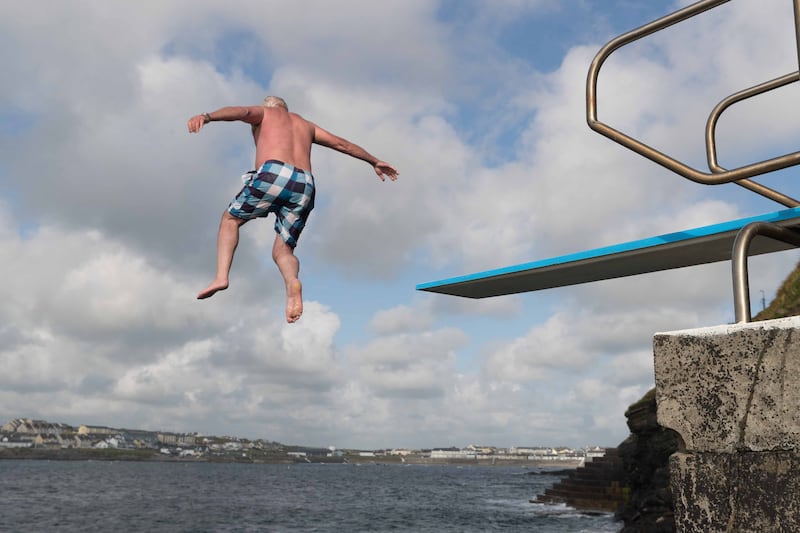
Haugh sees a potential tourism opportunity for Kilkee in the astonishing number of basking sharks that appeared for a fortnight last August, some 300 of them. The sharks are seven meters long. “Every North Atlantic basking shark was in Kilkee for their holidays,” he says. “They were all on the surface. We brought people out on boats three or four times a day to see them. If the sharks came back again, it could definitely be a big attraction.”
Later, I look at a video on YouTube that was shot last August of these sharks, and it is truly amazing. If they return in their hundreds this year, it will certainly make Kilkee a seasonal destination for anyone interested in the natural world. Look what Dingle did with just the one resident dolphin.
10.30am
I look at my weather app. It’s currently 22 degrees in Dublin, but it’s 16 here in Kilkee, and feels more like about 12. People out and about are wearing hoodies and down puffa jackets.
I have been told there is a newish cafe, Holly’s Cafe, on O’Curry Street, so I seek it out. One look at the gorgeous patisseries on display, as pretty as edible jewels, tells me whoever made these is seriously talented. There are raspberry macarons, a white chocolate passion fruit mousse and a lemon tart. Everything else is already gone. I try the passion fruit mousse, and it is exceptional. Most small-town cafes in Ireland do not offer this kind of ambition or quality: Kilkee unquestionably has a destination cafe in Holly’s.
Holly Kelliher made all the patisseries. She and her fiancé, Jon Butler, run this charming, atmospheric place. “It used to be a tea shop, 100 years ago,” she says, and shows me an old photograph, delighted with the synchronicity.
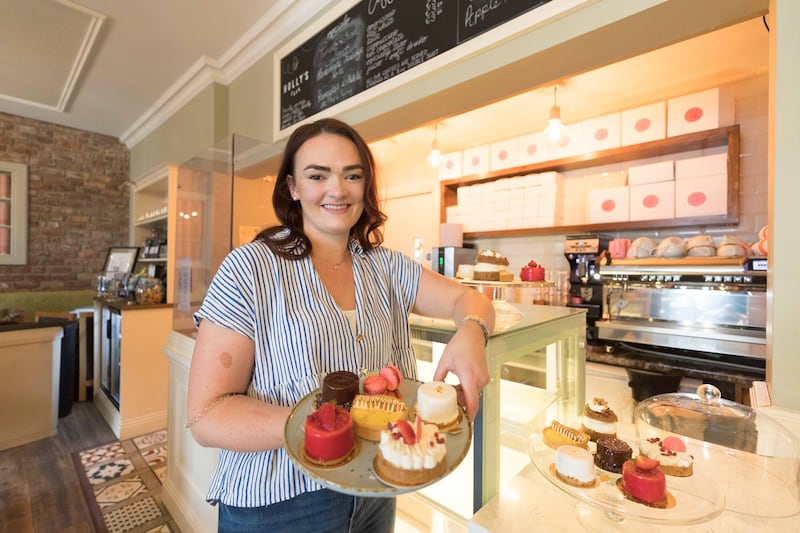
Kelliher trained in England, and spent some years at the Ritz in London. “I learned not to be afraid of changing things up, with a twist on something old.” She came to Kilkee as a child on holidays, and the couple decided to move here and open their own business. They are currently selling about 300 coffees a day, and the 80-100 desserts and patisseries she makes each day. There are sandwiches and salads too.
Have they any plans for an evening restaurant? She nods, vigorously. “I would love that. White crisp tablecloths. Good wine. Simple food, well done.”
Noon
The tide is in, so there is no swimming to be had at the famous Pollock Holes when I arrive; rock pools that fill with seawater when the tide goes out. There’s a totally different atmosphere up here. Down by the town, the semicircle of the sandy beach and sheltered harbour feels calm and serene. Up by the Pollock Holes, the landscape is wilder, with jagged rocks, and cliffs nearby, and the Atlantic is loud and swift and huge.
There’s a cafe up here called the Diamond Rocks, and there are actual rocks set out on a ledge nearby. “Please feel free to add to our positivity rocks,” reads an invitation. Several people have done just this. “I know I’m from Dublin, but I sure love it here,” someone named Rachel has written. Some stones are painted, some are carved, some look like they took a lot of time to create. “Wedding anniversary. 30 Years. Camille and Paul.” A child called Eva has made a picture of a butterfly and scratched the words “Up Cork”, with the date, 6-7-22.
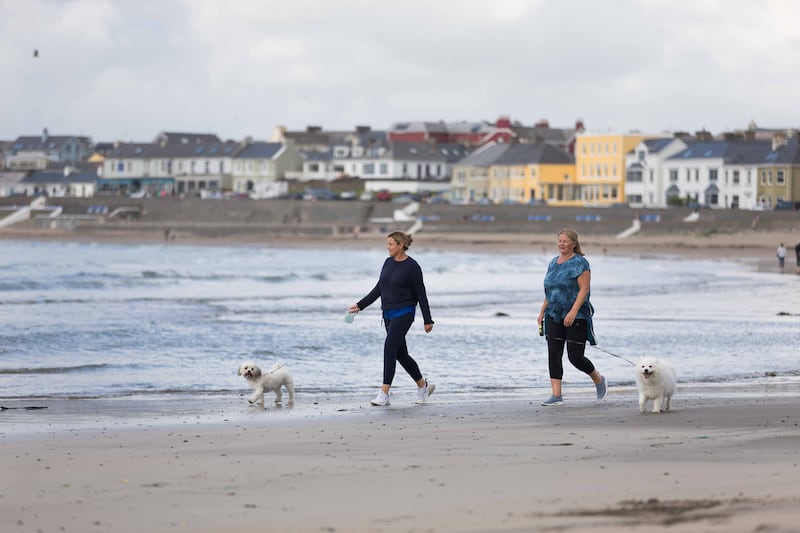
Also near here is a slightly incongruous statue of the actor Richard Harris with what I take to be a tennis racket. Someone has donated a hat for his bronze head; a grey hat with red and blue cars, which I suspect once belonged to a small child. Later, I discover Harris played a sport called racquets, and won local competitions in Kilkee in the late 1940s and early 1950s.
At the Diamond Rocks cafe, which has a spectacular view out over the ocean, I have a bowl of really excellent chowder. The place is absolutely buzzing, and the car park alongside is full.
1pm
David Considine is an auctioneer based in Kilrush, who handles properties across southwest Clare. In the Habit coffee shop on O’Connell Street, he says that in the past houses around Kilkee would take maybe three months to sell. That time has now telescoped to three weeks.
“There have been a lot of renovations going on too. People are buying older houses and renovating them.” Some 70 per cent of his buyers are paying cash. Considine reports that people who already owned second homes in the region are now using them much more frequently, and that these properties have since vanished from the rental sector.
Prices, like everywhere else, are up. “We have a three-bed semi in Moore Bay in Kilkee for sale now. It’s part of a little holiday village. The last similar property I sold there was pre Covid, at €100,000. This house went on at €175,000, and it’s now at €190,000.”
2pm
Kilkee retains many of its lovely Victorian buildings, a large number of which share the same architectural detail of bay windows. It feels both authentically Victorian, and also functional as a modern town, which is a rare combination in any heritage town.
Among its many famous visitors was the novelist Charlotte Brontë, who spent 10 days of her honeymoon here, from July 12th to July 22nd, in 1854. She and her Irish husband, Arthur Nichols, arrived to Kilkee by steamer boat from Limerick. They stayed at the West End Hotel, now a trio of privately-owned houses. In letters written from her honeymoon (the post office was then next door) Brontë wrote of Kilkee, “A glorious watering place, with the finest shore I ever saw. Completely girded with stupendous cliffs. It was most refreshing to sit on a rock and look out on the broad Atlantic boiling and foaming.”
I go in search of the former West End Hotel, where the author of Jane Eyre once spent 10 nights. The trio of houses, one set at a right angle to the others, all have sea views. There are two small plaques that commemorate Brontë, one put up by Kilkee Heritage, which faces the road, and the other around the corner, put up by the owners of West End House. That one reads: “Charlotte Brontë (1816-1855). Authoress. Honeymooned in this house, July 12th-22nd 1854. Protected structure No 411.”
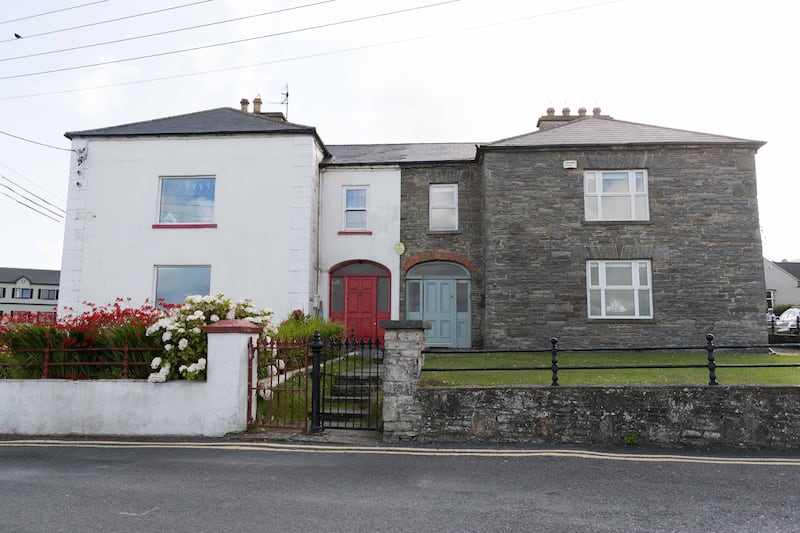
I stare at it for some time, imagining with wonder one of my favourite writers coming and going from here, smelling the ocean, and looking at the same cliffs, and the same coastal landscape.
There is a woman mowing the lawn, who allows me to take a picture on my phone of the plaque, and who says she was a friend of the owners. I ask her if she knew which room Brontë had occupied, but she doesn’t know. “There are good views from them all,” she says.
Brontë was to die nine months after her visit to Kilkee, aged only 38.
3pm
John Williams is the secretary of Kilkee Heritage, and it’s he who tells me about more of the town’s former famous visitors. The poet Alfred Tennyson visited. Richard Harris had a house here. Che Guevara spent a night in the Strand Hotel in 1961, when his plane from Moscow to Cuba had to refuel at Shannon.
“In 1961, 10 per cent of holiday accommodation in the Shannonside midwest was in Kilkee,” Williams explains. By 1971, Kilkee only had 1 per cent of the hotel population.” Due to the shortage of hotel beds in the Shannon locality back in 1961, Guevara and his fellow passengers were bussed to Kilkee for the night.
His visit is marked by a controversial large mural on one of Kilkee Bay’s walls, down by the beach. “The council painted it over, and people painted it back again.” Williams says with a smile. “They painted a few others around the town too.”
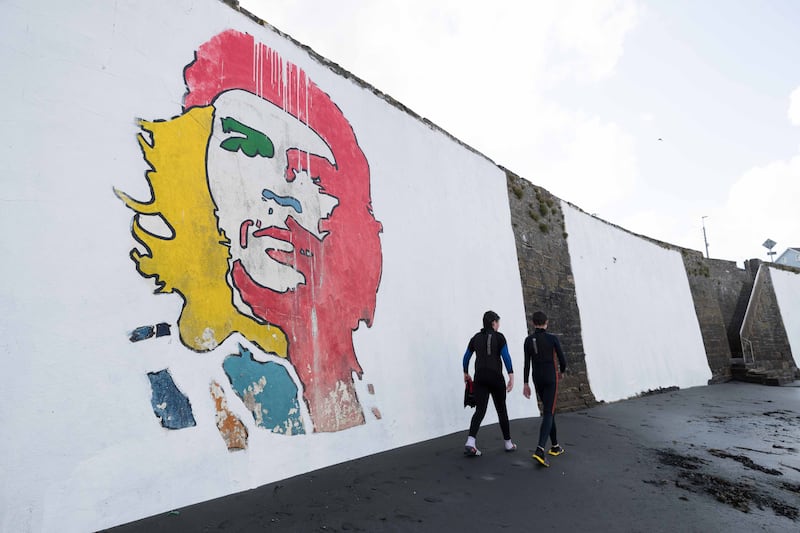
It’s surprising to me that so little is made of Brontë’s visit to Kilkee, which was more extended than Guevara’s, especially given how fascinated so many people are by anything related to Brontë. To my shame, although I am from Clare, I had not known she had once visited.
There is not much Williams does not know about Kilkee. I have noticed for instance, in my wanders around the town, that there seem far more houses than one would expect for a population of 972, which it was in the 2016 census. “There were 1,600 houses recorded, but between 1,200 and 1,300 of those are holiday houses,” he says. “We hope we will be back over the 1,000 population in the latest census as, unofficially, anything under 1,000 is a village.”
5pm
Siobhan Fairfax, originally from London, grew up in west Cork as a child. She moved to Kilkee five years ago, and she is a forager. “I learned a lot from my grandad,” she says. He showed her wild blueberries, strawberries, crab apples, blackberries. My mother would show me what flowers were edible. Later, I would pick sloes to make sloe gin.”
Fairfax forages seaweed, and tells me that when it hits a hot pan, the rusty brown colour turns green. She makes sea salt with edible flowers, and sells it and black garlic. She tells me she puts ox-eye daisies in tempura batter, and makes foraged teas. To my astonishment, I learn you can eat the entirety of a dandelion: “Poor man’s saffron,” as Fairfax describes it.
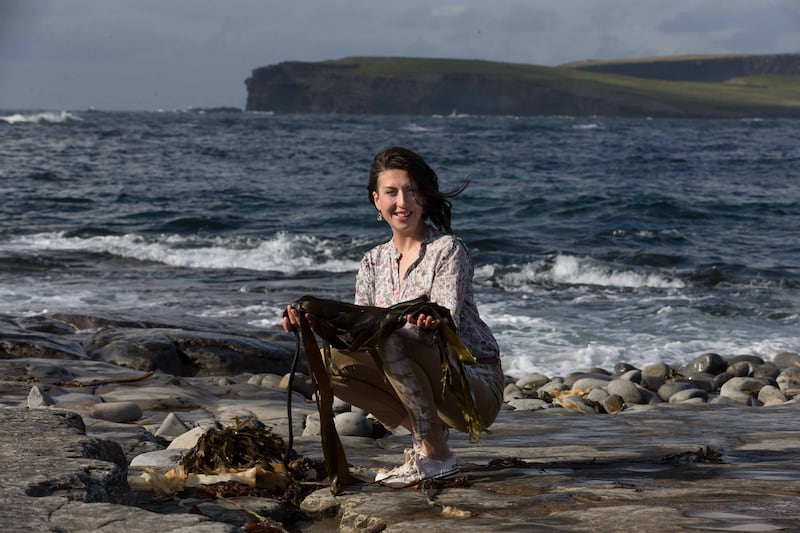
At the moment, she in the process of converting a former local milking parlour into a commercial kitchen, where she’ll be able to focus on making more produce; much of which she already sells online to health food shops. “I’m calling it No Harm Farm,” she says, and then asks me to acknowledge that she is only able to do this due to Leader funding she received.
She sometimes does special foraging walks by appointment, and they are particularly popular with hen parties. When I hear this, I think to myself Kilkee must get a different kind of hen party crowd from those I have witnessed in the past staggering around Temple Bar with sashes and tiaras.
7pm
I head off for a walk on the beach. It’s a beautiful, buttery-coloured sandy beach, with a few slowly collapsing sandcastles dotted here and there. The huge image of Che Guevara’s face stares out from the section of the beach walls painted white, at the west end of the beach. I don’t mind it. But if there is only one mural allowed on Kilkee beach, I’d prefer it was that of Charlotte Brontë.














